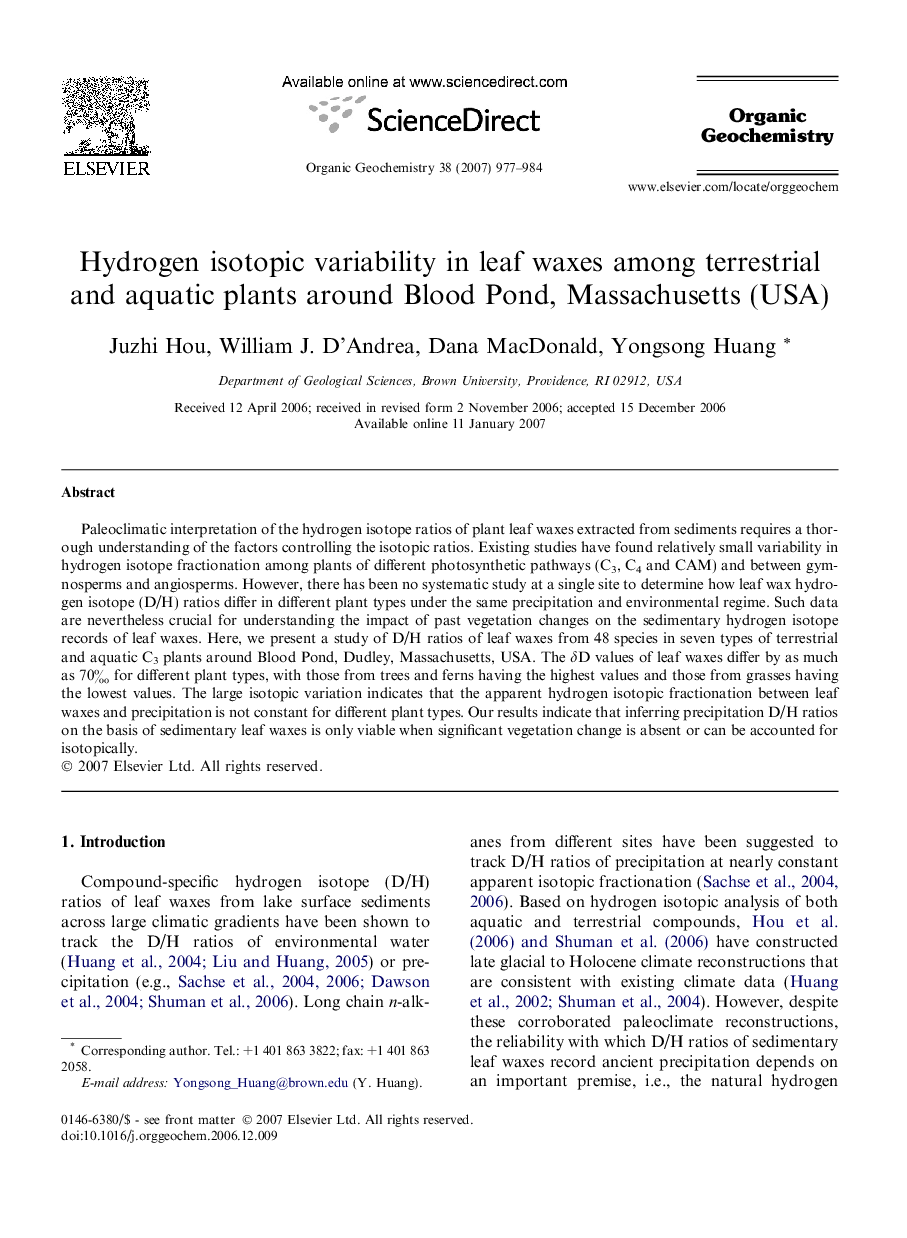| Article ID | Journal | Published Year | Pages | File Type |
|---|---|---|---|---|
| 5162100 | Organic Geochemistry | 2007 | 8 Pages |
Abstract
Paleoclimatic interpretation of the hydrogen isotope ratios of plant leaf waxes extracted from sediments requires a thorough understanding of the factors controlling the isotopic ratios. Existing studies have found relatively small variability in hydrogen isotope fractionation among plants of different photosynthetic pathways (C3, C4 and CAM) and between gymnosperms and angiosperms. However, there has been no systematic study at a single site to determine how leaf wax hydrogen isotope (D/H) ratios differ in different plant types under the same precipitation and environmental regime. Such data are nevertheless crucial for understanding the impact of past vegetation changes on the sedimentary hydrogen isotope records of leaf waxes. Here, we present a study of D/H ratios of leaf waxes from 48 species in seven types of terrestrial and aquatic C3 plants around Blood Pond, Dudley, Massachusetts, USA. The δD values of leaf waxes differ by as much as 70Ⱐfor different plant types, with those from trees and ferns having the highest values and those from grasses having the lowest values. The large isotopic variation indicates that the apparent hydrogen isotopic fractionation between leaf waxes and precipitation is not constant for different plant types. Our results indicate that inferring precipitation D/H ratios on the basis of sedimentary leaf waxes is only viable when significant vegetation change is absent or can be accounted for isotopically.
Related Topics
Physical Sciences and Engineering
Chemistry
Organic Chemistry
Authors
Juzhi Hou, William J. D'Andrea, Dana MacDonald, Yongsong Huang,
